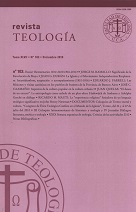Significado de la Revolución de Mayo
Keywords:
Argentine Bicentennial, Revolution of Independence, Open “Junta” of 1810Abstract
The present work links Argentinas Revolution of Independence (1810) with the rise of the mercantile bourgeoisie, the confluence of ideas, the interests of public and secret societies, political and economic groups and in the Rio de la Plata and the establishment of three revolutionary groups, each of whom sought his own opportunity to carry out the Revolution. Failure of each of these groups is shown. With the arrival of the new Viceroy Cisneros and the knowledge by the population of European events, the balance of pawer changed. This resulted in the message delivered by Cornelio Saavedra. The events that succeded where the open meeting of May 22,1810 and the formation of an Interim Board on the 24th, headed by Cisneros, who was replaced the next day by another led by Saavedra and formed by other significant figures. This “Junta” had a distinctly Christian stand with a deep sense of national and popular Americanism.
Downloads
Downloads
Published
How to Cite
Issue
Section
License
Copyright (c) 2020 Teología

This work is licensed under a Creative Commons Attribution-NonCommercial-ShareAlike 4.0 International License.














 Teología
Teología